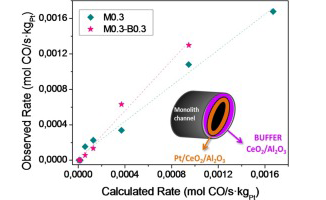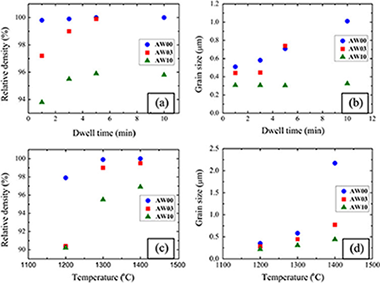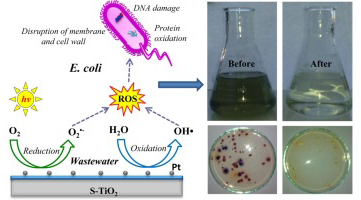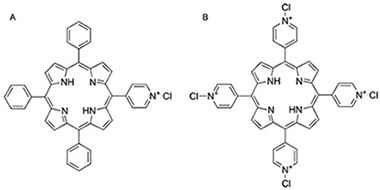Artículos SCI
2017
2017
Analytical investigation of Mudejar polychrome on the carpentry in the Casa de Pilatos palace in Seville using non-destructive XRF and complementary techniques
Garrote, MA; Robador, MD; Perez-Rodriguez, JLSpectrochimica Acta Part A-Molecular and Biomolecular Spectroscopy, 173 (2017) 279-291
Show abstract ▽

The pigments, execution technique and repainting used on the polychrome wood ceilings and doors in the Casa de Photos (Seville, Spain) were studied using portable X-ray fluorescence equipment. Cross-sections of small samples were also analysed by optical microscopy, SEM with EDX analysis, micro-Raman and micro-infrared spectroscopy and X-ray diffraction. These carpentry works are magnificent examples of the Mudejar art made in Spain in the early 16th century. Portable X-ray fluorescence gave good information on the different components of the polychrome. The SEM-EDX study of the surfaces of small samples gave information on their components and also characterized the compounds that had been deposited or formed by environmental contamination or by the alteration of some pigments. The SEM-EDX study of cross-sections facilitated the characterization of all layers and pigments from the support to the most external layer. The following pigments were characterized: red (cinnabar/vermillion, lead oxide, iron oxides and orpiment/realgar), black (carbon black), white (white lead and titanium barium white), yellow-orange-red-brown (orpiment/realgar and iron oxides), green (chromium oxide), blue (indigo blue and ultramarineblue), and gilding (gold leaf on bole). False gold, bronze and brass were also found. The pigments were applied with the oil painting technique over a support layer that had been primed with animal glue. This support layer was gypsum in some cases and white lead in others. This study is essential to the polychrome conservation of the studied artwork, and it will help clarify uncertainties in the history and painting of Mudejar art.
Enero, 2017 | DOI: 10.1016/j.saa.2016.09.027
Química de Superficies y Catálisis
Structuring Pt/CeO2/Al2O3 WGS catalyst: Introduction of buffer layer
Gonzalez-Castano, M; Ivanova, S; Laguna, OH; Martinez, LM; Centeno, MA; Odriozola, JAApplied Catalysis B-Envionmental, 200 (2017) 420-427
Show abstract ▽

This work is devoted to the development of novel structured catalytic system for WGS reaction. The new concept is related to the presence of a pre-catalytic "buffer" layer formed by WGS-inert oxide, i.e. not involved in CO conversion, but able to increase the number of participating sites in water dissociation step during the reaction. The performance of the proposed systems appears to depend strongly on the stream composition, being its effect beneficial in highly reducing atmospheres making it ideal for cleanup application. An increment of the partial kinetic order for water species is observed and reveals the key role of the water activation for superior catalytic behavior.
Enero, 2017 | DOI: 10.1016/j.apcatb.2016.07.039
Propiedades mecánicas, modelización y caracterización de cerámicos avanzados
Spark plasma sintering of fine-grained alumina ceramics reinforced with alumina whiskers
Tamura, Y; Moshtaghioun, BM; Gomez-Garcia, D; Rodriguez, ADCeramis International, 43 (2017) 658-663
Show abstract ▽

Densification of alumina whisker-reinforced alumina ceramics by spark plasma sintering (SPS) has been investigated with the aim of obtaining a fine-grained microstructure and also studying the effect of whisker addition on the room-temperature mechanical properties. It was found that whisker addition retards slightly the sinterability of alumina by whisker hindering of particle rearrangement. Besides, the internal stress on the alumina matrix particles reduced due to the presence of a whisker network structure of strong rigid boundaries. Nevertheless near fully-dense and fine-grained alumina ceramics with alumina whisker content between 3 wt% and 10 wt% could be obtained under appropriate SPS conditions. The hardness of alumina ceramics with 3 wt% was comparable to that of pure alumina ceramics (similar to 26 GPa) whereas its fracture toughness (5.6 MPa m(1/2)) was higher (4.2 MPa m(1/2)). Crack bridging by well-dispersed whiskers and whiskers pull-out were identified as the main toughening mechanisms.
Enero, 2017 | DOI: 10.1016/j.ceramint.2016.09.210
Fotocatálisis Heterogénea: Aplicaciones
Study of the E. coli elimination from urban wastewater over photocatalysts based on metallized TiO2
Murcia, JJ; Avila-Martinez, EG; Rojas, H; Navio, JA; Hidalgo, MCApplied Catalysis B-Envionmental, 200 (2017) 469-476
Show abstract ▽

In this study, a series of photocatalysts based on TiO2 was tested in the elimination of Escherichia coli (E. coli) from urban wastewater. Firstly, TiO2 obtained by sol-gel method was modified by sulfation, and then gold or platinum nanoparticles were photodeposited on sulfated titania surface. Platinized samples were also prepared with different Pt content of 0.5 and 2 wt.%. The samples thus obtained were extensively characterized and it was found that sulfation considerably increases the S-BET value of TiO2 and promotes the anatase phase formation; it was also found that 0.5 wt.% Pt-TiO2 sample presents the lowest noble metal particle size and the best particle dispersion. All the photocatalysts synthesized have shown bactericidal effect and the results obtained by using bare and metalized TiO2 were considerably better than the results obtained with the commercial TiO2 P25 Evonic. Different light intensities were also evaluated in the photocatalytic tests and it was found that 120 W/m(2) leads to obtain the highest E. coli elimination from wastewater samples; however no total elimination of E. coli or other species of bacteria was achieved even after 5 h of photocatalytic treatment without catalyst. Total elimination of the E. coli was achieved after 3 h of photocatalytic reaction by using 120 Wim(2) of light intensity and 2 wt.% Pt-TiO2 as photocatalyst; no bacterial regrowth was observed even after 72 h.
Enero, 2017 | DOI: 10.1016/j.apcatb.2016.07.045
Nanotecnología en Superficies y Plasma
Optical Gas Sensing of Ammonia and Amines Based on Protonated Porphyrin/TiO2 Composite Thin Films
Castillero, Pedro; Roales, Javier; Lopes-Costa, Tania; Sanchez-Valencia, Juan R.; Barranco, Angel; Gonzalez-Elipe, Agustin R.; Pedrosa, Jose M.Sensors, 17 (2017) 24
Show abstract ▽

Open porous and transparent microcolumnar structures of TiO2 prepared by physical vapour deposition in glancing angle configuration (GLAD-PVD) have been used as host matrices for two different fluorescent cationic porphyrins, 5-(N-methyl 4-pyridyl)-10,15,20-triphenyl porphine chloride (MMPyP) and meso-tetra (N-methyl 4-pyridyl) porphine tetrachloride (TMPyP). The porphyrins have been anchored by electrostatic interactions to the microcolumns by self-assembly through the dip-coating method. These porphyrin/TiO2 composites have been used as gas sensors for ammonia and amines through previous protonation of the porphyrin with HCl followed by subsequent exposure to the basic analyte. UV-vis absorption, emission, and time-resolved spectroscopies have been used to confirm the protonation-deprotonation of the two porphyrins and to follow their spectral changes in the presence of the analytes. The monocationic porphyrin has been found to be more sensible (up to 10 times) than its tetracationic counterpart. This result has been attributed to the different anchoring arrangements of the two porphyrins to the TiO2 surface and their different states of aggregation within the film. Finally, there was an observed decrease of the emission fluorescence intensity in consecutive cycles of exposure and recovery due to the formation of ammonium chloride inside the film.
Enero, 2017 | DOI: 10.3390/s17010024
- ‹ anterior
- 204 of 420
- siguiente ›














